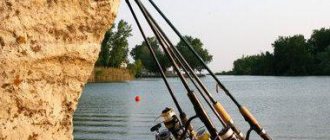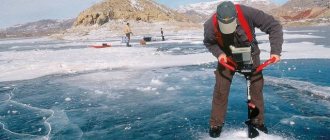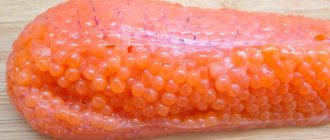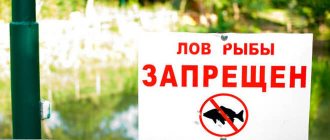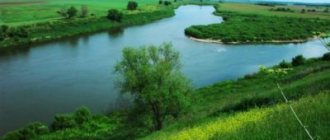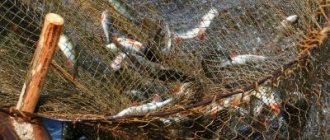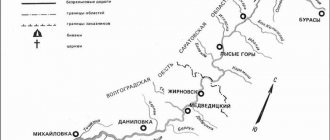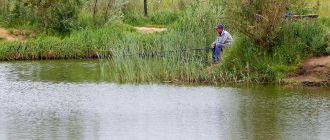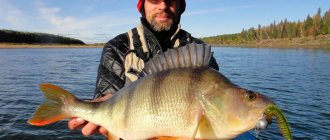How to fish legally? Instructions for law-abiding fishermen
If you are a law-abiding citizen, you should know the following:
- Fishing is allowed in places where there is no ban. Among them: common reservoirs, lakes and rivers;
- It is prohibited to fish in reserves, private properties or areas where fry are bred;
- You can find out about all the places where fishing is prohibited at the inspection office at your place of residence;
- You can fish in any season, except when it is prohibited. Most often this is spawning time. Please note that it depends on the type of fish you are going to catch. In addition, at this time it is prohibited to sail on any vessel if your goal is fishing;
- Among the tools allowed for fishing are fishing rods with floats, spinning rods, mugs and girders. You cannot use more than five tools per person;
- Almost any gear is allowed, but it should not have more than ten hooks;
- Fishing underwater is only possible if you are not using scuba gear;
- The amount of fish caught per person depends on the place of residence. Most often, 5 kg of fish per person;
- Some fish species (minnows, ruffes and bleaks) are not valuable specimens, and there are no restrictions on their catching;
- The number of crayfish per day should be less than 30 individuals. The length of the individual is no more than 9 centimeters;
- Networks are allowed in some regions. Among them are Siberia and the Far East. But this requires a license. The networks are marked with markings, by which you can determine that you are its owner;
- A fishing license is purchased from Rosrybolovstvo. It can be obtained if you want to catch one of the prohibited species. You will have to pay for the document. You also need to pay a fee for each river inhabitant you catch. Payment depends on the type of individual;
- It is prohibited to sell or give away the license to others;
- There is a so-called fisherman's card. It gives a person the opportunity to fish in any territory of Russia. But catching rare species is still not allowed. The card can be purchased at Rosrybolovstvo. It cannot be transferred to another person;
- Fish that you catch with a license or card are prohibited from being sold at the market;
Choosing bait when fishing with a spinning rod
The modern fishing market has a huge selection of baits for catching freshwater inhabitants of our waters with a spinning rod. When buying lures, it is important for a beginner to understand what he expects from this gear, what kind of fish he is going to catch, in what conditions and with what spinning rod. With proper attention to these points, the fisherman develops a taste for selecting lures.
He will know that when pinching fish to a “ringing”, ultra-fast action form, it is advisable to use jig baits. For a rod that is short up to 210 centimeters and has sufficient rigidity, the fisherman will take wobblers to the pond, the persistent movement of which can be handled by such a spinning rod.
An inquisitive fisherman knows that when fishing in snags or in shallow water, poppers, walkers and other surface baits will help out, and on a bottom richly overgrown with algae and in rocky areas, it is preferable to use all kinds of non-snagging baits.
Good to know! If a spinning angler wants to try his hand at hunting for asp, he will add castmasters and Devons to his arsenal, and to catch chub he will purchase small wobblers and spinners. In short, each fish has its own range of favorite baits. The most common trophies for spinning rods are pike, perch and pike perch, so further we will talk about the baits preferred by these predators.
For pike
- Classic spinners are concave spinners that perform oscillations of varying degrees of intensity in the water, which depends on the constitution of the spinner’s body and the reeling speed. They perform well on pike during the autumn feeding period of this predator.
- Castmasters are heavy and long-range spinners of a specific shape, showing a measured, medium-intensity game, convincingly resembling a wounded fish.
- Asymmetrical spinners are spinners with a shifted center of gravity to the lower part of the body, characterized by sweeping, yaw movements when retrieved.
- Rotating spoons or spinners are spoons with a petal rotating around a metal axis. The spinner comes into action with water resistance, therefore, the faster the speed of the retrieve, the more often the petal rotates. They catch decent pike on spinners number 3 to 5.
- Wobblers are artificial fish made of plastic or wood, differing in body height, size and angle of inclination of the nasal blade. Wobblers with a small blade relative to their length are suitable for catching pike by twitching, and fish with a wide and long blade, capable of diving to great depths, are used in trolling fishing.
- Poppers are bladeless surface baits that, due to a recess in the nose, produce gurgling sounds when pulled with a blank. Ideal for fishing for pike in snags.
- Silicone fish: these include twisters, which have a long and wide arched tail; vibrating tails - an imitation of a fish with a hoof-shaped tail actively wagging in the water; and “edibles” - silicone nozzles soaked in salt and flavorings. The common size of silicone when fishing for pike is 5-12 cm.
For perch
Perch can bite on all the same baits as pike, only their size should be much smaller.
If you try to rank the preferences of perch, the first three places will be taken by:
- turntables number 3;
- silicone baits up to 5 cm long;
- micro-oscillators weighing 2-6 grams.
Of the silicone baits in perch fishing, edible rubber has proven itself to be the best. Manufacturers often create “edibles” in the image of aquatic larvae and crustaceans that perch feed on.
It must be remembered that most of these imitations do not have a pronounced game when fishing, so it is the fisherman’s task to animate them with the tip of the rod. Dragging a silicone crustacean along the bottom, from which the perch picks up food, can be effective.
Recently, the method of catching perch using a retractable leash has gained popularity. This method is indispensable when fishing on difficult terrain. Attaching an end sinker to the main line and mounting it 20-30 centimeters from the weight of a leash up to a meter long with a twister or spinner at the end allows the fisherman to fully control the course of the bait in the bottom layer.
For zander
The list of catchable baits for pike perch is much narrower than that of the above-mentioned predators. This does not mean at all that pike perch will not show interest in a wobbler or spinner, but the main element of pike perch is jig bait:
- Twisters
- Vibrotails;
- Foam fish.
When fishing for pike perch, oscillating spinners are the best catchers, and above all, narrow spinners of the driven type, reminiscent of a minnow or bleak.
For what purposes are the bans established?
Fishing restrictions have two purposes:
- The number of fish in most water bodies of the country is gradually decreasing. The situation needs to be corrected. That is why the process of raising fry is carried out in certain places. If we catch them during cultivation, we will not succeed in restoring the species;
- Some species are beginning to die out. To prevent their disappearance, some restrictions were put in place.
What exactly are the restrictions?
There is Federal Law No. 166, which allows fishing in all places that have no special use. But even in general places some restrictions are possible:
- Banned in some places in the region;
- Ban on catching certain fish;
- Limited size of fish caught;
- Limited catch weight;
- Seasons when fishing is limited;
- Size and type of transport used on water;
- Catch size per fisherman;
- Other restrictions or prohibitions.
Ban on pike fishing
Despite the fact that the distribution area of predatory fish is large, there is a period when it is impossible to catch pike with a spinning rod - a fishing ban.
As expected, the ban on fishing for almost all fish is legal during the spawning period . The popular predator spawns at the beginning of spring , when the snow melts on the reservoirs.
In March and April, freshwater fish are even visible on the surface of the water; spawning fish appear in spring floods and shallow waters.
From what date can you catch pike with a spinning rod? There is no definite answer, since in order to preserve fish resources, special deadlines are established for catching freshwater predators, which vary for different regions.
You can find out about your region by contacting the fisheries authority.
In some areas, a ban on fishing for commercial and recreational purposes is in effect from March to June. All the nuances of the prohibitions are described on the Rybnadzor website.
pike during the spawning period with a spinning rod , because at this time it does not feed at all. But after spawning, the predator’s feeding begins – a joy for the fisherman.
Duration of bans
The start and end dates of the ban are different, most often they are associated with spawning. This phenomenon begins in spring and ends in summer. For example, fish spawning in Bashkiria occurs from early May to mid-June. But this does not mean that you cannot come to the river with a fishing rod. It’s just that during spawning some restrictions are set:
- Fishing is allowed if you have one fishing rod;
- One hook with size less than 10 is allowed;
- Daytime fishing is permitted. Nighttime is prohibited;
- Fishing is allowed only on the shore, without boats or vessels.
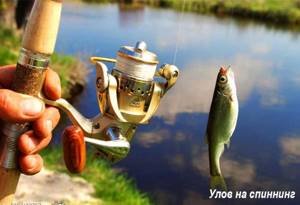
After the ban is lifted, these restrictions are also canceled.
Timing of the spawning ban in 2021
Letting the fish spawn quietly and take a month off from fishing is a good idea. After all, at this time you can start preparing gear, ammunition, a boat and a motor, or go to quench your fishing thirst by fishing in a reservoir where fish are bred artificially.
The spawning ban is established for each area separately. In the Novosibirsk region the ban applies to:
- from April 20 to May 20 in the NSO on the Ob River and all its tributaries;
- from April 25 to June 10 in the Novosibirsk reservoir;
- from April 25 to May 25 in closed lakes with rivers flowing into them;
- from April 25 to May 25 on the lakes: Chany and Malye Chany, Yarkul, Sartlan, Uryum, Ubinskoye, Khoroshoe;
- from May 20 of the year to June 15 from the mouth of the approach channel of the hydroelectric power station to the village of Maloye Krivoshchekovo (the beginning of Korablik Island) in the areas of the settlements Pochta, Beloyarka, Tashara, Vyatsky Kameshek.
We suggest you familiarize yourself with: Make a PVA net for fishing with your own hands
But there are also legal ways to catch fish, even during spawning.
Places where fishing is prohibited
There is a list of absolutely prohibited places:
- Near dams and bridges;
- In places where juveniles are grown (factories, some reservoirs);
- Objects where spawning occurs;
- In very deep places (if you have a boat and not a vessel);
- In nature reserves;
- In a nursery where new species of fish are grown;
- In fisheries;
- In places where young animals are released (directly during rearing or release).
Video of pike fishing on girders
Pike fishing is fun at any time of the year. To catch a decent fish trophy, a fisherman needs patience, observation, physical strength, dexterity and resourcefulness. And knowing the behavior of fish, its habits, as well as some secrets and features of fishing is a sure step towards successful fishing. We hope that our pike fishing tips will be useful to you. And at the end, some tips on how to catch a trophy pike.
- Set yourself up for success, don’t be tempted by the small fish in your catch. Use your fishing intuition to find a place where a toothy predator may be hiding.
- Use large baits. Large predators often respond to wobblers 20-30 cm long. When fishing by twitching, use minnow wobblers with a length of at least 12-15 cm. Large baits work well in the autumn.
- Practice jig fishing, which will work for large pike in the spring and early summer, when large bait is not always active.
- Don’t shy away from fishing in large bodies of water with good food supply. This is where you can catch a real trophy.
- Don’t forget about the spring and autumn pike “zhor”. At this time there is real success in catching real prey.
“No tail, no scales,” for you!
What tools are prohibited to use?
The following tools are not permitted:
- Networks;
- Traps, not counting crayfish traps. There are restrictions on their use;
- Throw and poke, in places where salmon are found;
- Airguns. Apart from the tools that are used underwater;
- Fishing rods, spinning rods, various designs and other tools, if one person uses more than ten hooks;
- Fishing trawls and seines;
- DIY tools with hooks;
- Devices that are made on the basis of a network (screens, capes and drills);
- Lifts whose size exceeds one square meter;
- Piercing weapon;
- In June, fishing is prohibited with any tools (except for a fishing rod with one hook).
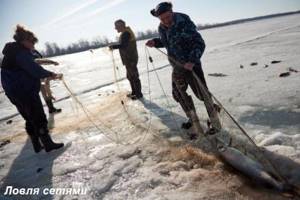
Almost all mining tools, with the exception of one fishing rod, are prohibited.
What gear can you use to fish during the ban?
During the spawning ban, fishing from the shore is allowed only with one float or bottom fishing rod, spinning rod, feeder, equipped with no more than two hooks. A double and a tee count as one hook. You can use 5 girders per fisherman.
You should know that fishing with nets, with the help of explosives, chemicals, electric current, methods of fishing, and jamming is always prohibited by Federal Law!
In addition to the fact that spinning fishing is prohibited during spring spawning, fishing with all kinds of poaching “gadgets” is also prohibited. By the way, for using the latter, fines are much larger than for using standard fishing rods, and possibly even criminal prosecution.
Poaching gear includes:
- Chinese fishing line nets (popularly called “Chinese”). Such nets cause enormous damage to water bodies, as they are most dangerous for small and medium-sized fish. In addition, such gear is quite cheap, and therefore they can be thrown into the water along with fish, which will rot and poison the water.
- Nylon nets with large mesh. They are already destroying larger fish.
- Dragnet. It is often used for fishing purposes, but its use is only possible with special permission.
- A valve is a piece of equipment used by poachers during the spawning period. The fish enters a V-shaped trap made of durable materials, from where it can no longer escape on its own.
- Spider. Its use is permitted if the dimensions do not exceed 1 by 1 meter.
- Change over. This is a tackle that has a huge number of hooks in its design. They are tied to a long rope and pulled across a pond.
- Prison. Using this type of fishing leaves behind a large amount of wounded fish, so it is also equated to poaching.
- Electric fishing rod. Perhaps this is the most terrible weapon of poachers. This “tool” mercilessly suppresses and kills fish of any size. After using it, the fish will never be able to spawn.
- And the last type of poaching, which is also prohibited, is the use of explosives and toxic agents.
We invite you to familiarize yourself with: Techniques for catching grayling with a spinner and rating the best models
Fishing restrictions depending on the size of the individual
The length of the fish is measured from the mouth to the rays of the tail. Crayfish have from the middle of the eyes to the end of the tail.
- Carp - 30 centimeters;
- Crayfish - 9 centimeters;
- Pike perch - 38 centimeters;
- Burbot - 40 centimeters;
- Pike - 32 centimeters;
- Asp - 45 centimeters;
- Catfish - 40 centimeters;
- Golovan - 40 centimeters;
- Carp - 24 centimeters;
- Rybets - 22 centimeters;
- Taran - 16 centimeters;
- Grass carp - 45 centimeters;
- Bream - from 17 to 20 centimeters. It depends on where you are fishing;
- Trout - 15 centimeters;
- Podust - 15 centimeters;
- Bersh - 25 centimeters;
- Barbel - 20 centimeters;
- Herring - 15 centimeters;
- Silver carp - 50 centimeters.
If the length of the individual is shorter, it must be released back. Avoid damage.
Ban on fishing based on quantity - acceptable values.
Limits are also set on the number of fish caught:
- One person cannot catch more than 5 kilograms of fish per day;
- You can export fish if it does not exceed the catch in two days (that is, 10 kilograms). This indicator does not depend on its type (raw, dry or dried);
- There are no restrictions on ruff, minnow or bleak;
- If you don't have a license, you can't catch a lot of fish;
- The number of crayfish caught cannot exceed 30 in one day.
Spawning ban 2021. Let's let the fish spawn
During fish spawning in the spring, certain fishing standards apply.
Thus, fishing is strictly prohibited:
- with nets (as at any other time), as this is considered poaching;
- fishing with a float rod and donka is prohibited if it has more than three hooks or a hook larger than 10;
- spinning fishing;
- It is prohibited to use more than one fishing rod per person (spinning is completely prohibited);
- use of any floating craft with a motor.
It is worth noting that fishing from a boat during spawning is also prohibited, although swimming in the reservoir is possible, but only if you do not have any fishing equipment with you (rods, nets, etc.). If you need to navigate the river with fishing gear during spawning, you must obtain permission to avoid misunderstandings and troubles.
But not everything is as bad as it might seem at first glance. And fishing, although with some restrictions, is still possible.
So, you can fish during spawning:
- from the shore;
- using one rod or donka with one hook;
- the hook should be no more than size 10 according to international standards;
- only during the daytime.
https://www.youtube.com/watch?v=xbmQ0X7joE8
Despite the strict restrictions, using only the listed fishing methods, you can have a good time and catch your long-awaited trophy.
All restrictions and prohibitions on spinning fishing, as well as the number of rods, time for fishing and other restrictions are automatically lifted after the completion of fish spawning. The deadline for lifting the ban is mid-June.
Russia has also introduced certain daily fish catch rates by weight. They are distributed both to amateurs and to fishermen who are members of sports clubs. For the latter, the daily fish allowance is no more than five kilograms. It also applies to the minimum length of the fish. When fresh, the length of pike should be at least 32 centimeters.
For amateur fishermen, the maximum daily weight when pike is spawning is three kilograms. The length of the fish is unchanged and is also 32 centimeters. While staying at the reservoir for more than one day, the fisherman has the right to catch fish equal to the two-day norm. As an exception, the weight may be more than normal if it is one copy.
During spawning in reservoirs, there is a high concentration of various fish species near the coastline. In this regard, in addition to pike fishing, there is a ban on fishing other types of fish with a spinning rod.
Each region of Russia has a list of prohibited species of aquatic biological resources. In the Moscow region these include:
- sterlet;
- trout;
- catfish;
- grayling;
- subdust;
- white-eye;
- blue;
- saberfish;
- bersh;
- lamprey;
- cancer.
For other regions of the country, the lists of fish subspecies prohibited from catching should be clarified with local fisheries authorities.
Please note that you can receive a fine for fishing with a spinning rod in some areas of rivers and reservoirs, since fishing by any means is prohibited there.
We invite you to familiarize yourself with: Lures for Pike Fishing with Spinning Rods
Here are just some of the large bodies of water:
- In the city of Dubna, downstream of the Volga, at a distance of 1 kilometer from the dam.
- Pestovskoye, Istrinskoye and Klyazminskoye reservoirs.
- Lutosnya River.
Some fishing spots in these reservoirs are still allowed. For clarification, you also need to contact special authorities.
In order not to spoil your fishing holiday, especially during the spring spawning, and not to become a poacher out of ignorance, do not use various gear that increases the volume of fish caught. If you are going to any body of water, try to find out as much as possible about it: what fish can be caught in it and what cannot be caught, what maximum weight you are entitled to.
During spawning, do not break the “month of silence”. Do not litter, do not park cars on the shore, do not use water transport, avoid yourself and do not allow anyone to poach. In a word, take care of the surrounding nature so that tomorrow your children can enjoy all the delights of a good rest and fishing.
The following rare fish species are included in the Red Book of the Novosibirsk Region and are prohibited from catching: Siberian sturgeon, sterlet, nelma, muksun, taimen, lenok, grayling, and female crayfish with caviar.
We remind you that it is prohibited to catch in the Ob Reservoir pike perch whose size is less than 33 cm, bream less than 25 cm, and crayfish - 9 cm. The length of the fish is determined from the beginning of the snout to the base of the caudal fin, where the scales end. Individuals that do not meet these dimensions should be released with the least possible damage. In the Ob River there are no restrictions on the size of fish - you can catch pike perch and bream of any size, but we encourage you to still release small things.
You should know that the Federal Law also prescribes catch standards, which amount to 10 kilograms per fisherman per day. Fish caught in excess of the norm must also be released, while the capture of one specimen whose weight exceeds 10 kg is allowed.
Prohibited fishing methods. How can you not fish?
Prohibited methods of capture:
- Highlighting and undercutting;
- Jamming;
- Fences blocking the movement of fish;
- Zherlitsy, if you have more than ten hooks;
- Rakolovki. Only three per person;
- Structures with more than ten hooks;
- Hand catching crayfish;
- Smyk;
- Combines;
- Items that reduce the amount of water in the reservoir;
- Setting up camp on icy terrain;
- With boats that are incorrectly registered or not registered at all;
- With vehicles that do not have an identification mark;
- Firearms;
- Devices that use current;
- Electric fishing rods;
- Any means of transportation during spawning;
- Underwater, using scuba gear.
What types of aquatic life are subject to restrictions?
Depending on the region, certain species are not allowed to be hunted:
- In the Moscow region it is prohibited to catch bersh, catfish, trout, crayfish, white-eye, grayling and lamprey;
- In the Kama region you cannot catch sterlet, taimen and Russian sturgeon;
- Throughout Russia, restrictions have been established on fishing for bream, asp, pike perch and pike;
- It is prohibited to use pike, bream or pike perch as bait;
- Catching some types of fish is completely prohibited. For example, Atlantic sturgeon (listed in the Red Book). Aral salmon and pseudoshovel are rare species and are protected.
Punishments
For violation of one of the listed prohibitions, there may be the following penalties or prohibitions:
- If one of the fishing rules was violated, a fine of two to five thousand rubles will be imposed. In addition, all fishing equipment and means of transportation on the water will be confiscated.
- For fishing during spawning, a fine of up to 300 thousand rubles will apply.
- If you hunt pike, carp or carp when they are spawning, you will be fined 250 rubles per individual. Bream - 25 rubles. Cancer - 42 rubles. The amount will be double if the caught individual is a female. For salmon, the payment will double again.
Spinning fishing during the prohibited period
During spawning it is not allowed to use spinning rods. You can fish with a fishing rod from the shore.
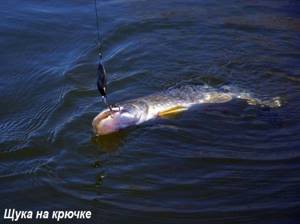
Many people ask why you can fish with a fishing rod, but not with a spinning rod?
During spawning, the fish swims very close to the shore to lay eggs. If you are fishing with a spinning rod, the bait will touch the bottom and can damage the egg laying. As a result, all offspring will die. A fishing rod is allowed, since the bait is not so heavy in weight, it will not drag along the shore and cause damage to the eggs.
What kind of spinning rod can be legal in May?
First of all, only fishing from the shore is allowed. The length of the rod can be from 3 to 3.5 m. Fishing with two hooks is allowed. Tees are prohibited, since it is the number of tees that counts.
Naturally, you need to be careful when choosing a place. Large bodies of water are spawning grounds. Therefore, you will have to go to the river, where you can use spinning from the shore.
Fishing for pike in spring from the shore, secrets and tips
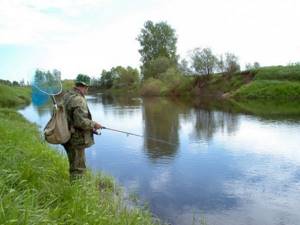
It's easier by boat - you can get to any place you like. However, knowing some of the features of spring pike fishing, you can bring home a good catch. After spawning, when the pike begins to actively feed, its behavior becomes predictable. At this time, the toothy one can be found in reservoirs with swampy shores, where it lives in reeds with rotten vegetation at a depth of about 50 cm in muddy water. Then the pike goes to small windless bays-pockets, well warmed by the sun.
The optimal time for catching pike from the shore is during the daytime, when the water warms up and the pike becomes active. The most effective bait for this time will be an oscillating spoon with a slow and lazy movement. You should cast the lure along the bank or to the opposite bank of the river and move it slowly.
Red, white and silver spoons are the best bait colors for this time in clear water. In muddy conditions, use fluorescent and yellow baits. If something doesn’t go according to your plan, you should change your fishing tactics using a jig spinning rod. Change the bait by attaching a twister (10-12 cm) or a pike streamer to the jig head.
Catching pike on a spinning rod with jig bait from the river bank, video:
If you have violated one of the rules
Ignorance of the listed prohibitions and restrictions does not exempt you from liability. For violations you will have to pay a fine.
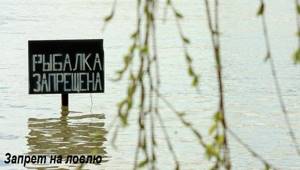
You cannot pay directly on the spot. You will have to take a receipt and visit a Sberbank branch to pay for it. You can appeal the fine within 10 days from the receipt of the receipt.
There are serious violations that can result in up to two years in prison. Such violations include the use of prohibited fishing tools, which can destroy a large number of aquatic inhabitants and plants. The time limit may be even higher if the person used these tools in a nature reserve, spawning grounds, or area containing endangered species.
All of the above restrictions are set for the restoration of the aquatic ecosystem. This is a necessary measure to protect aquatic life from extinction.

